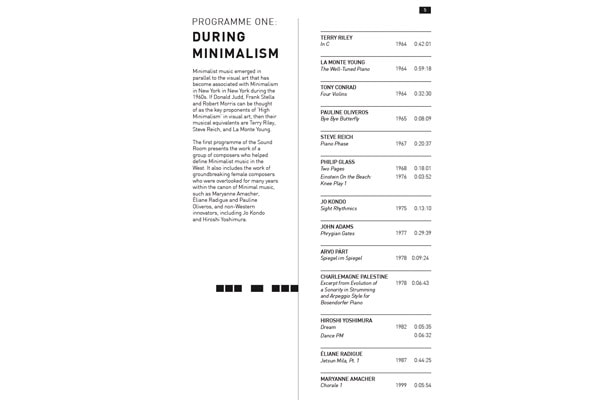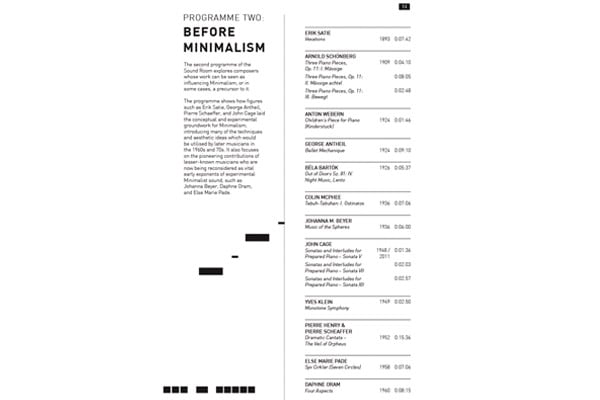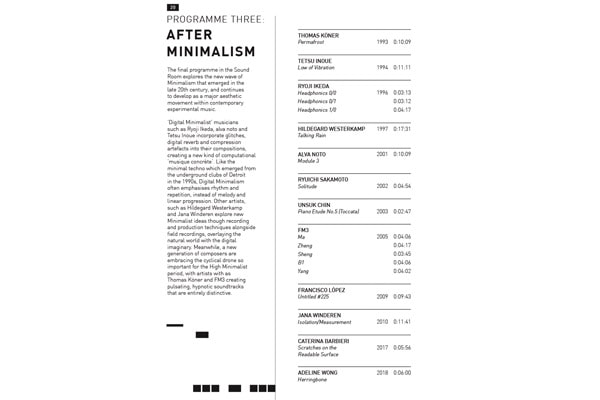

Sound
Minimalism also had a profound influence on music. Sometimes austere and terse, other times expansive and mind-altering, Minimalist music aims to strip away all non-essential elements revealing the essence of sound.
The history of minimalist music can be traced back to the late 1800s, however, it was the radical experiments of American composer John Cage that showed that silence can also be part of music. Minimalist music came to prominence in parallel to Minimalist visual art that emerged in the 1960s. If Donald Judd and Frank Stella can be thought of as key proponents of ‘High Minimalism’ in the visual arts, then their musical equivalents are Terry Riley and Steve Reich.
Their compositions can be heard in the Sound Room – a listening space – as part of a programme of work by 40 composers and musicians.
Artists in this gallery: 40 composers including: Terry Riley, Steve Reich, Philip Glass, LaMonte Young, Tony Conrad, Èliane Radigue, John Cage, Erik Satie, Johanna Beyer, Daphne Oram; Ryoji Ikeda, Alva Noto Jana Wilderen.


The Sound Room
Minimalism within music is based on the idea that there is virtue in getting back to basics, in paring back, and revealing the essence of a sound, or even the absence of sound. It is music made with limited or minimal musical materials that holds that simplicity can be beautiful, and can reveal its own unexpected complexity. Sometimes austere and terse, at other times expansive and mind-altering, Minimalist music is characterized by steady pulses, gradual transformation, syncopated rhythmic loops, gliding drones, and the repetition of musical phrases.
The Sound Room charts the course of the development of Minimalist music, from the avant-garde modernizers of early 20th century music, to Minimalist innovators such as Terry Riley, Steve Reich and Philip Glass, who worked alongside their visual art counterparts in the “High Minimalist" period of the 1960s and 1970s, to a new wave of Minimalism which emerged in the latter part of the century. It presents not only the canonical works of Minimalism, but also the emerging experimental practices that predated them, and those that show their legacy is not only living on, but is actively evolving with a new generation of musical experimenters.
The Sound Room offers visitors the opportunity to abandon the visual, to sit in a calm space, and become immersed in a musical form that shapes perceptions of time and space.
As conductor, Charles Hazlewood advises, "you have to drop your usual way of listening, lose your expectations and surrender to an eternal now."
The Sound Room Reader is written by Wesley Goatley and Honor Harger and edited by Nina Ernst and Adrian George. It introduces the three programmes which are presented in the Sound Room, and the 40 compositions featured.



